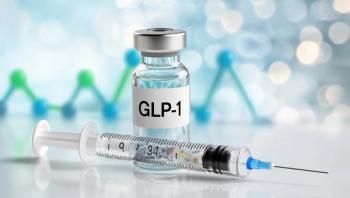
Understanding Age-Related Macular Degeneration
Peters L. Salgo, MD: Hello, and thank you for joining us for this American Journal of Managed Care®’s Peer Exchange®. In the United States, more than 11 million people have some form of age-related macular degeneration (AMD), which can lead to loss of vision. There are 2 forms of the disease: wet AMD and dry AMD. In wet AMD, vision loss can be rapid and severe. This AJMC Peer ExchangeTM panel of experts in ophthalmology and managed care is going to discuss the diagnosis of AMD, therapeutic options available, and patient access to therapy.
I’m Dr. Peter Salgo. I’m a professor of medicine and anesthesiology at Columbia University College of Physicians and Surgeons, and I’m an associate director of surgical intensive care at New York-Presbyterian Hospital. Joining this distinguished panel to share their perspectives are Dr. Peter Dehnel, medical director of medical management at Blue Cross Blue Shield of Minnesota in Eagan, Minnesota; Dr. Gary L. Johnson, practicing physician and medical director in Madison, Wisconsin; Dr. Jared Nielsen, Vitreoretinal Diseases and Surgery, at Wolfe Eye Clinic in West Des Moines, Iowa; and Dr. Charles Wykoff, director of clinical research for Retina Consultants of Houston and deputy chair for ophthalmology at Blanton Eye Institute-Houston Methodist Hospital in Houston, Texas. Gentlemen, thank you for joining us, and thank you, too. Why don’t we get right to work?
Let’s get some definitions settled right away: age-related macular degeneration, or AMD, what is it? How common is it?
Jared Nielsen, MD: Macular degeneration is the most common blinding disorder among patients over 55 years old in the United States, and it has a huge impact on patients who suffer from that disease. As you can imagine, patients who suffer with loss of central vision can’t drive or do many of the things that they like to do, and it really affects their quality of life. Unfortunately, the person who suffers from AMD isn’t the only solitary victim of this disease. It affects caregivers and families who then have to step in and help somebody who has lost their independence and ability to take care of themselves.
Peters L. Salgo, MD: It sounds almost self-serving to say that caregivers are affected, but when you’re dealing with somebody with this kind of illness, everybody is in the same boat here. Clearly, somebody is losing vision, but somebody is caring for that person, no?
Charles Wykoff, MD, PhD: Absolutely. It can affect the entire family. It can be a devastating process.
Peters L. Salgo, MD: I’m interested in the number that you quoted because diabetes is a huge problem in the United States. You’re telling me that AMD is distinct from that and there’s more of it?
Jared Nielsen, MD: Well, diabetes is the most common blinding disorder of working-age adults in the United States. But once you get over 55, then AMD takes over as the most common.
Peters L. Salgo, MD: So, it’s a massive problem. I’m not sure that a lot of primary care doctors are aware of it.
Gary L. Johnson, MD, MS, MBA: I think it does not have the same recognition outside of ophthalmology that, certainly, we see on a daily basis with our patients. By 2050, they estimate that there will be 80 million people worldwide that are affected by this disorder, and that’s staggering.
Charles Wykoff, MD, PhD: The way I like to frame it for my patients’ families is that, if you take all causes of blindness in our country, AMD causes more blindness than everything else combined.
Peters L. Salgo, MD: Everything else combined?
Charles Wykoff, MD, PhD: It’s the big player, if you look at all ages combined.
Peters L. Salgo, MD: Again, I think that comes as news to all practitioners combined. Maybe not to ophthalmologists or retinal specialists, maybe not to payers. But to the average private physician out there, primary care, I don’t think that has really made an impact. Do you see that?
Charles Wykoff, MD, PhD: I think, unfortunately, for decades it has been accepted that people are going to get older, their hair is going to turn gray, and they’re going to go blind. There are certainly many cultures around the world where that’s the case, often due to cataracts. But in our country, the most common cause of blindness as we get older is not cataracts, it’s macular degeneration.
Jared Nielsen, MD: In fact, 12% of people over the age of 80 have macular degeneration. So, as you’re walking around your community, 1 out of every 10—or more—individuals are going to be suffering from that disease when they’re 80 years old.
Peters L. Salgo, MD: I don’t want to pound this thing into the ground, but 10% is an enormous amount of folks, right?
Jared Nielsen, MD: That’s significant.
Gary L. Johnson, MD, MS, MBA: Are there more things that can be done at the primary care level?
Jared Nielsen, MD: That’s a very good question. I think it’s challenging, sometimes, for primary care physicians to have the tools to figure out what sort of disease their patients may be suffering from. Certainly, there are valiant efforts from telemedicine screening, and Charlie and I are both involved in some of the projects to try and bring some of those technologies into primary care. But really, it takes some skill and expertise to make that type of diagnosis and to help people navigate while they have that disease.
Charles Wykoff, MD, PhD: I think 2 places where primary care could be involved are the associated problems. We know that when people, older people especially, lose vision, there are 2 big things that go up: mental illness, which I don’t think is screened for enough in the ophthalmology community, and instability—so fall risk. Both of those things need to be managed more broadly among the poor-sighted, especially from the primary care perspective.
Newsletter
Stay ahead of policy, cost, and value—subscribe to AJMC for expert insights at the intersection of clinical care and health economics.















































